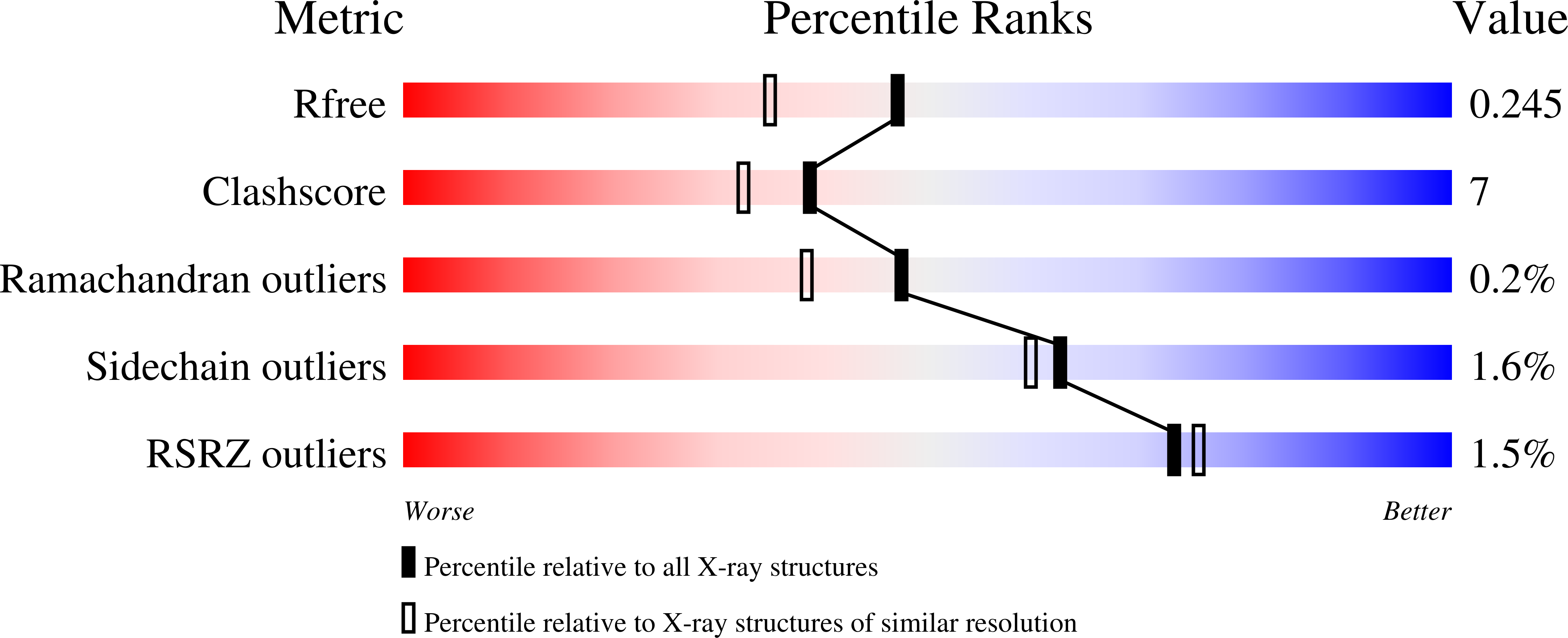Enzyme-substrate complex structures of CYP154C5 shed light on its mode of highly selective steroid hydroxylation.
Herzog, K., Bracco, P., Onoda, A., Hayashi, T., Hoffmann, K., Schallmey, A.(2014) Acta Crystallogr D Biol Crystallogr 70: 2875-2889
- PubMed: 25372679
- DOI: https://doi.org/10.1107/S1399004714019129
- Primary Citation of Related Structures:
4J6B, 4J6C, 4J6D, 4JBT - PubMed Abstract:
CYP154C5 from Nocardia farcinica is a bacterial cytochrome P450 monooxygenase active on steroid molecules. The enzyme has recently been shown to exhibit exclusive regioselectivity and stereoselectivity in the conversion of various pregnans and androstans, yielding 16α-hydroxylated steroid products. This makes the enzyme an attractive candidate for industrial application in steroid hormone synthesis. Here, crystal structures of CYP154C5 in complex with four different steroid molecules were solved at resolutions of up to 1.9 Å. These are the first reported P450 structures from the CYP154 family in complex with a substrate. The active site of CYP154C5 forms a flattened hydrophobic channel with two opposing polar regions, perfectly resembling the size and polarity distribution of the steroids and thus resulting in highly specific steroid binding with Kd values in the range 10-100 nM. Key enzyme-substrate interactions were identified that accounted for the exclusive regioselectivity and stereoselectivity of the enzyme. Additionally, comparison of the four CYP154C5-steroid structures revealed distinct structural differences, explaining the observed variations in kinetic data obtained for this P450 with the steroids pregnenolone, dehydroepiandrosterone, progesterone, androstenedione, testosterone and nandrolone. This will facilitate the generation of variants with improved activity or altered selectivity in the future by means of protein engineering.
Organizational Affiliation:
Junior Professorship for Biocatalysis, Institute of Biotechnology, RWTH Aachen University, Worringerweg 3, 52074 Aachen, Germany.



















